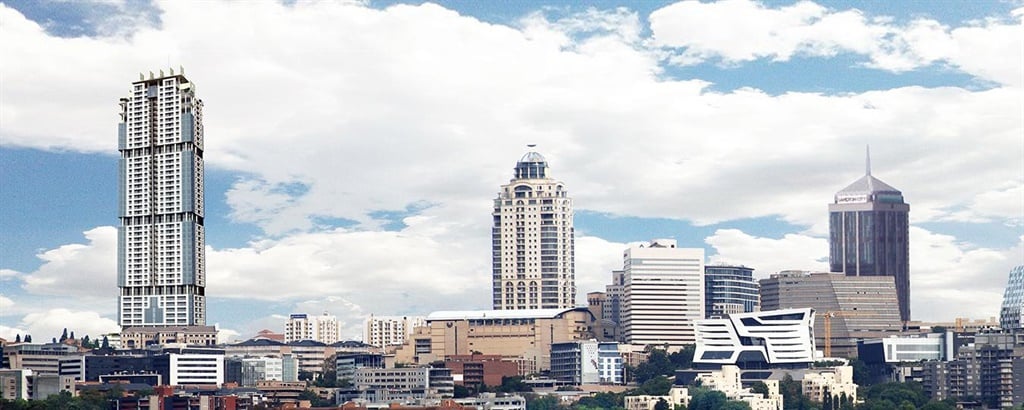
It’s set to be Africa’s tallest building, but the Leonardo in Sandton is a badly named luxury skyscraper with no inclusivity and no connection to its environment, writes Grethe Kemp.
Property developer Legacy Group and Nedbank are hard at work constructing what is claimed will be Africa’s tallest building. Called the Leonardo, it comes at a price tag of R3 billion and it will top the Carlton Centre with a height of 234m – 55 floors in total. But despite developer claims that the project has been designed around principles of sustainable development and green building, I have many issues with the Leonardo.
First and foremost, the name. Yes, I get it, the Legacy loves naming their projects after Italian painters – they’ve given us the Michelangelo Hotel, after all. But the fact that Africa’s tallest building is going to have an Italian name is an issue that, for me, reveals the very essence of what’s wrong with it. The Michelangelo is a nouveau riche interpretation of the European Renaissance era – all gilt finishes and faux luxury. Why are we romanticising the Italian renaissance in post-apartheid, post-colonial South Africa?
Aesthetically, I find the Leonardo ugly and uninspiring. It doesn’t represent anything South African or show any aspiration to signify something about its environment.
There are many debates around what an “authentically South African building” would look like. I’m not saying there is one way to make a building, but we only have to look at the pleasing uMkhumbane Cultural and Heritage Museum in Durban’s Cato Manor, Diébédo Francis Kéré’s tree-inspired Serpentine Pavilion and Peter Rich’s Mapungubwe Interpretation Centre to know that inspired African architecture exists.
Not inclusive
I’m sure Legacy also breathed a sigh of relief that the Leonardo was approved before the City of Joburg’s new inclusionary housing policy, which comes into effect in May.
According to Reuben Masango, member of the Joburg mayoral committee for development planning, this policy follows the Spatial Development Framework 2040, which outlines plans to create a more spatially just city by 2040. Inclusionary housing will require that all developments of 20 units and more allocate 30% of the building to low-cost housing. Developments can either include units with a maximum monthly rental cost of R2 100, or build units smaller in size – at least half of what the size of their other units would be.
Policies like these have long been implemented in cities all over the globe and, considering that, according to UN-Habitat, South Africa has nine of the most unequal cities in the world, it’s much needed here. For too long, we have confined the core to the periphery. Low-income workers have had to commute long distances into the city to work, sometimes waking up at 4am to be at work at 8am. It’s an exhausting way to live that deprives them of time with their families, time to relax and to just be human.
Inclusionary housing not only wants to correct the spatial inequality that is a legacy of our past, but make better use of space in low-density areas so that more people can benefit from the infrastructure and amenities there.
“We’ve seen that good infrastructure is located in spaces with the least amount of people; we want to change that,” Masango told me during a phone interview.
Not that the policy has gone without criticism – various resident associations have already raised objections, while others say a R2 100 rent cap is still too high for lower-income earners to afford.
But it is at least a step towards making housing accessible in a market controlled by private interest.
With the Leonardo’s 200 units ranging from R4.2 million to R250 million, it’s safe to say that the building is anything but inclusionary. It’s just another luxury high rise that only the very rich will be able to enjoy.
Patrick McInerney, director of Co-Arc International Architects, recently said during a 702 interview with Azania Mosaka that, at any given time, the project requires about 2 000 to 3 000 employees and has created 18 000 to 20 000 jobs. It’s ironic to think that the builders working on the Leonardo probably commute long distances just to get to work every day.
After a glowing interview, at least one listener raised the question about the lack of inclusionary units in the building.
“We have a few [inclusionary] units, but they’re going to be largely private,” McInerney said. “So it’s not a social or rental opportunity.”
The Leonardo’s developers are calling the building “a statement about Africa’s future”. If that’s the case, it’s a future I don’t much care for.




 Publications
Publications
 Partners
Partners









